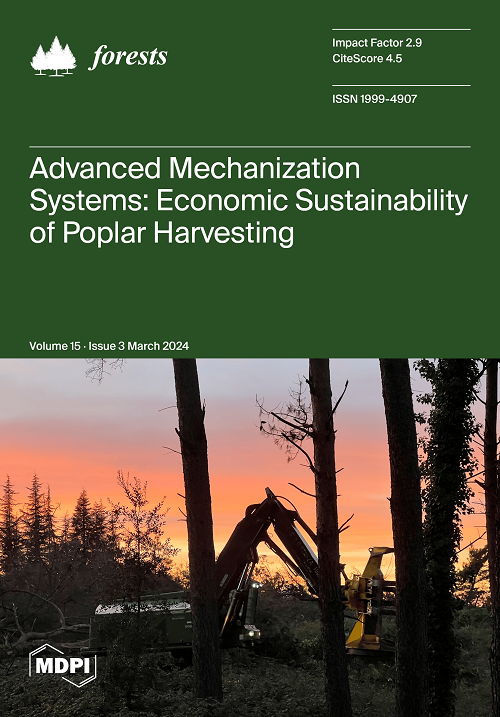海岛苏铁栖息地对 Aulacaspis yasumatsui 入侵的反应相似,与共生消费者无关
IF 2.5
2区 农林科学
Q1 FORESTRY
引用次数: 0
摘要
苏铁的自然分布包括三个岛群。随着 2003 年关岛和 2007 年罗塔岛的入侵,装甲鳞甲 Aulacaspis yasumatsui 开始对这种广泛分布的树木造成破坏。这种食草动物已经威胁到这一独特的裸子植物物种的灭绝。在互不相连的岛屿亚群中,共生食草动物的数量和身份各不相同,我们利用其中的六个栖息地来评估树木的死亡趋势,以确认A. yasumatsui是物种生存的最大威胁。在每一个新的亚种群中,这种害虫最初侵袭爆发后,立木幼苗和树苗最先被消灭,幼苗接着被消灭,随后成树的死亡速度较慢。在有五个其他消费者、三个其他消费者、一个其他消费者或没有其他消费者的生境中,这种植物种群行为的发生时间并无不同。我们已经证明,在一个孤立的亚种群中,作为唯一的生物威胁,A. yasumatsui会导致存活率下降,其速度不亚于它与多达五个其他消费者共同作用时的速度。这种鳞甲是对 C. micronesica 最严重的威胁,在鳞甲食草的基础上增加其他专门食草动物并不会改变最初植物死亡的速度和程度。本文章由计算机程序翻译,如有差异,请以英文原文为准。
Insular Cycas micronesica Habitats Respond Similarly to Aulacaspis yasumatsui Invasion, Regardless of Co-Occurring Consumers
The natural distribution of Cycas micronesica includes three island groups. Damage to the widespread tree from the armored scale Aulacaspis yasumatsui was initiated with the 2003 invasion of Guam and the 2007 invasion of Rota. This herbivore has threatened the unique gymnosperm species with extinction. The number and identity of co-occurring consumers are dissimilar among disjunct insular subpopulations, and six of these habitats were used to assess tree mortality trends to confirm that A. yasumatsui stands alone as the greatest threat to species persistence. Following the initial infestation outbreak of this pest into each new subpopulation, the standing seedlings and saplings were the first to be culled, the juvenile plants were the next to be culled, and then the adult trees were killed more slowly thereafter. The timing of this plant population behavior did not differ among habitats with five other consumers, three other consumers, one other consumer, or no other consumers. We have shown that A. yasumatsui acting as the sole biotic threat in an isolated subpopulation can generate a decline in survival that is as rapid as when it is acting in conjunction with up to five other consequential consumers. This armored scale is the most acute threat to C. micronesica, and adding other specialist herbivores to the scale herbivory does not alter the speed and extent of initial plant mortality.
求助全文
通过发布文献求助,成功后即可免费获取论文全文。
去求助
来源期刊

Forests
FORESTRY-
CiteScore
4.40
自引率
17.20%
发文量
1823
审稿时长
19.02 days
期刊介绍:
Forests (ISSN 1999-4907) is an international and cross-disciplinary scholarly journal of forestry and forest ecology. It publishes research papers, short communications and review papers. There is no restriction on the length of the papers. Our aim is to encourage scientists to publish their experimental and theoretical research in as much detail as possible. Full experimental and/or methodical details must be provided for research articles.
 求助内容:
求助内容: 应助结果提醒方式:
应助结果提醒方式:


